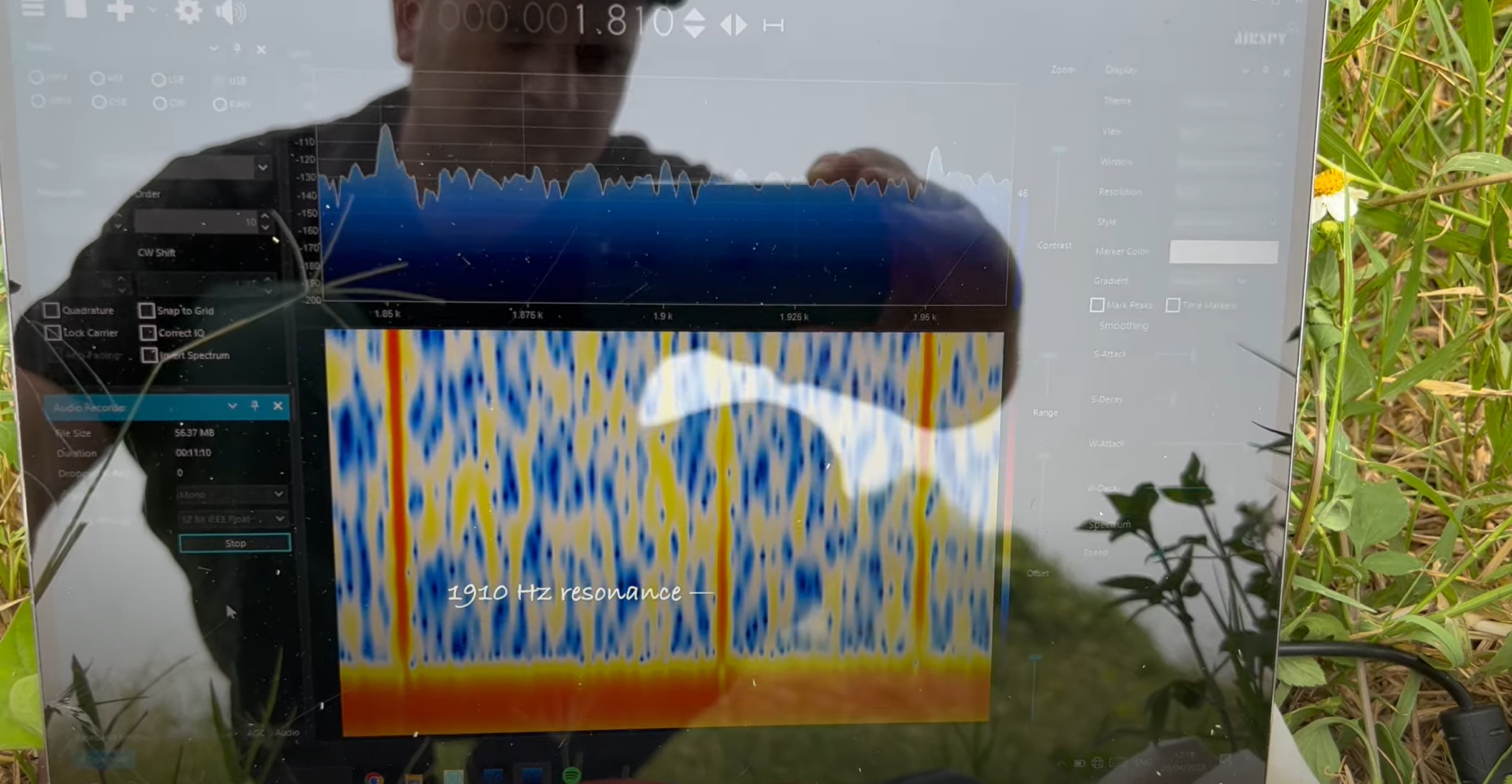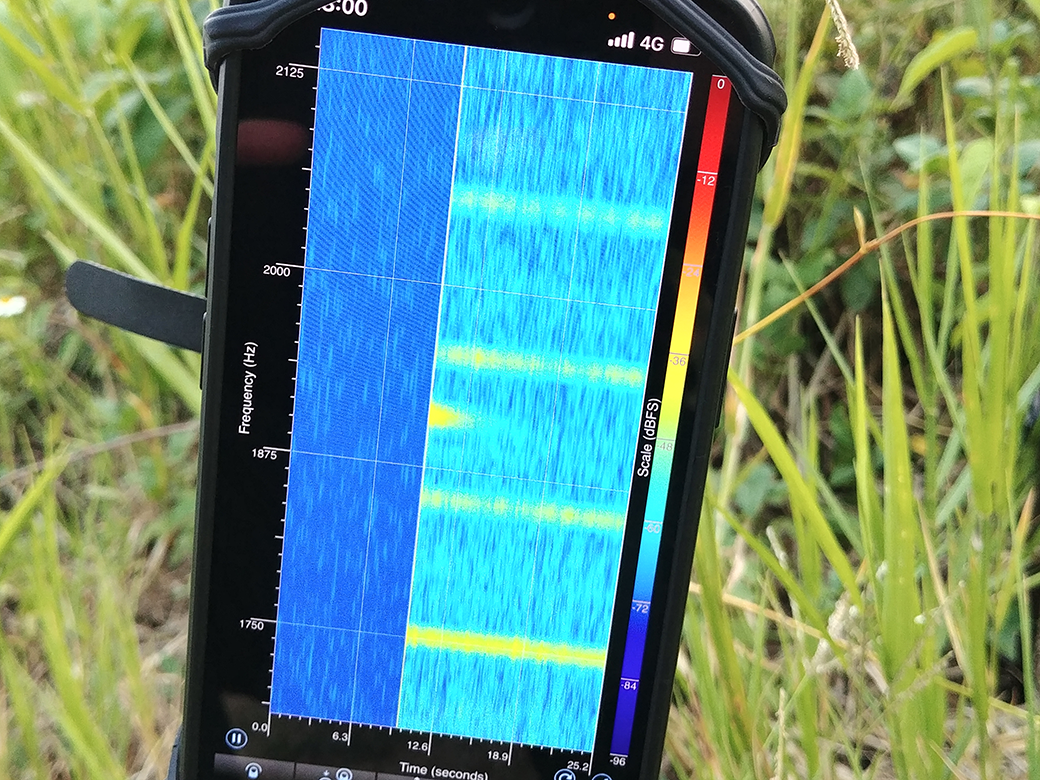-
11Perform an experiment
Once a suitable location has been identified, set up the system to display the receiver spectrogram as before. Then, insert a sample into the coil. Tap water is an obvious sample choice, but most common liquids will also exhibit a hydrogen peak.
Next, we need to polarize the sample by turning on the battery. Polarization time typically ranges from 6 to 15 seconds, with the maximum sample polarization achieved around the 12-second mark. A 6-second polarization will yield a shorter but still usable free induction decay.
Select the battery using the rocker switch. A strong EM pulse should then appear on the spectrogram. Wait 12 seconds, then quickly toggle the switch between battery and receiver modes. Aim to flip the switch as rapidly as possible, while trying to avoid shaking the control box.
The resulting Free Induction Decay (FID) should appear immediately after the switch. Initially, you will see the overpowering noise of the switching process, followed by the FID, which will then decay. Expect a maximum FID duration of 6 seconds in low-noise conditions outdoors, and around 1 second indoors in an urban area.
For an example of a live FID, please consult the project videos.
A 1910Hz FID using SDR# to display the signal:
![]()
A 1910Hz FID using Spectrumview to display the signal:
![]()
Nuclear Magnetic Resonance for Everyone
Explore the magnetic properties of hydrogen with this build guide
 Andy Nicol
Andy Nicol

Discussions
Become a Hackaday.io Member
Create an account to leave a comment. Already have an account? Log In.